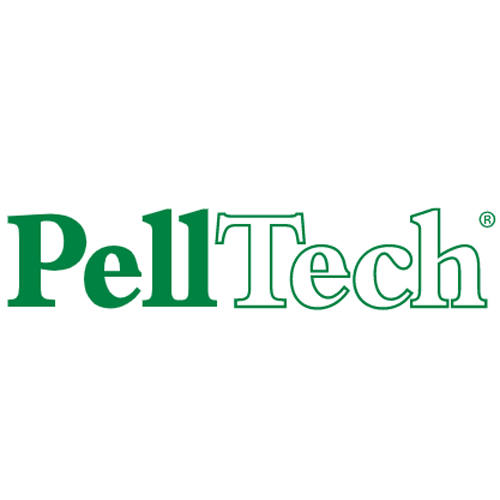PellTech
PellTech® is a truly unique pelleting aid. This combined binder and die lubricant is ideal for formulations that are difficult to pellet, or when pelleting conditions (e.g., poor moisture adsorption) are unfavourable. PellTech can also be used for pelleting of wood and other types of biomass.
PellTech is a sustainable, lignin-based product that has been specially enhanced to make it more effective as a processing aid. It acts as a combined pellet binder and lubricating aid and will increase your production rate and pellet durability simultaneously, resulting in more pellets and improved quality.
Certain feed ingredients cause the mill to run hard, not accept target temperature, and force a reduction in throughput. These include dried distillers grains with solubles (DDGS), cassava, whey, lactose, new corn, high mineral or fibre levels, etc.
At typical inclusion rates of 0.25% to 0.75%, PellTech can allow your mill to run hotter, faster, and with better pellet quality.
PellTech offers compound feed producers a range of potential benefits:
- Get more out of existing set up
- Expansion without additional investment
- Enables cheaper but harder formulations
- Same output with fewer mill operation hours
- Product mix optimisation
- Better quality/service lead to improved price/market share

Download free eBook:
Field trials
PellTech in shrimp feed production
A shrimp feed mill in south-asia improved production rate by 35% with addition of 0.4% PellTech.
PellTech in swine finisher pellets
Field trial in a swine finisher diet in the usa shows how PellTech increased production rate by 20% and improved energy efficiency.
Pelltech trial in broiler finisher
How PellTech eliminated die blockages, increased rate by 118% and maintained pellet durability in a broiler finisher diet in south asia.
More on pelleting aids
Your guide to pelleting
Pelleting is the process of converting finely ground mash feed into dense, free flowing pellets or capsules. in this in-depth article we look at the art and science of pelleting. learn how the industry started, how pellets are made, and what ingredients and aids you need to produce high quality pellets.
How different types of starch can influence pelleting
Next to protein, starch is one of the primary ingredients used in animal feed. however, starches from different sources offer a range of functional properties that need to be considered. not only from a nutritional perspective but also from a technological aspect.
Segregation of fines
Fines segregation can be particularly bad when liquids such as fat and enzymes are applied post-pelleting because a higher percentage will be absorbed by the fines. also, minerals tend to bind poorly to feed and may make up a greater proportion of the fines.
Importance of pellet quality
Modern birds grow faster when pellet quality is good. they spend less time eating and more time resting. quality pellets also prevent segregation and allow the birds to get the nutritional package that is designed for them.
Testing pellet quality
Borregaard recommends the new holmen pellet tester, as it provides a more rigorous test and accurately predicts the degradation that pellets experience during transport and handling.
Feed pellet quality factor
It is well known that various raw materials have a different effect both on pellet quality and throughput. therefore, changes in formulations might dictate adjustments in operating conditions, like steam pressure, meal temperature, energy input, inclusion of pellet binders etc.

